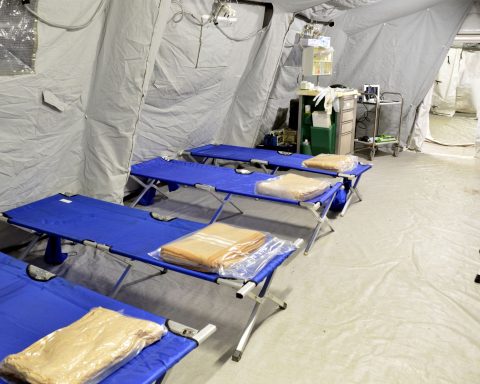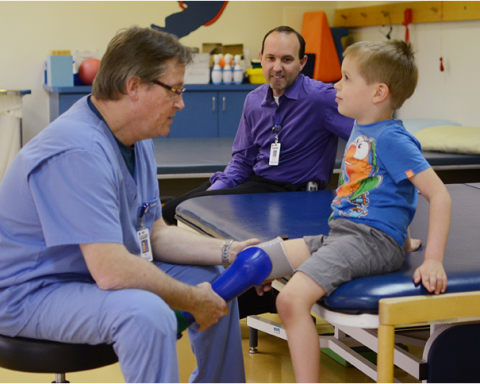The healthcare landscape is rapidly transforming, fueled by the convergence of technology and medicine. Among the myriad of innovations, the Internet of Things (IoT) stands out as a beacon of hope, promising to revolutionize patient care, streamline operations, and enhance medical outcomes. As we delve into the IoT in Healthcare Market Outlook for 2031, the data paints a vivid picture of an industry poised for unprecedented growth and innovation.
A Phenomenal Growth Trajectory
The journey of IoT in healthcare has been nothing short of remarkable. In 2021, the industry was valued at an impressive US$ 91.71 billion. Fast forward to 2031, and projections indicate a staggering leap, with the market poised to reach a monumental US$ 648.94 billion, boasting a robust Compound Annual Growth Rate (CAGR) of 21.8% from 2022 to 2031. These numbers not only underscore the immense potential of IoT in healthcare but also hint at the transformative impact it is set to unleash on the global healthcare landscape.
Unveiling the Power of Connected Healthcare
At its core, IoT in healthcare revolves around the seamless integration of connected devices within medical settings, spanning hospitals, clinics, and beyond. These devices, ranging from smart thermostats to advanced wearable technologies, play a pivotal role in redefining patient care paradigms and enhancing comfort, safety, and overall well-being.
The proliferation of IoT applications fosters greater patient engagement and empowers individuals to take charge of their health journey. Wearable IoT devices, in particular, emerge as champions in this domain, arming patients with real-time health data, trends, and alerts, thus catalyzing proactive healthcare management.
The Dawn of Wearable Healthcare
One of the most striking facets of IoT in healthcare is the rise of wearable devices, poised to revolutionize patient safety outcomes. These devices, equipped with cutting-edge sensors and connectivity features, hold the key to unlocking a new era of remote patient monitoring and personalized care.
For instance, the collaboration between Manipal Hospitals and Fitbit showcases the transformative potential of wearable IoT technologies in post-surgery recovery. By harnessing the power of Fitbit’s wearable technology alongside ConnectedLife’s virtual platform, clinicians could remotely monitor patients’ vital signs, paving the way for a more holistic and patient-centric approach to healthcare delivery.
Government Initiatives: Catalysts for Change
In the quest for digital health transformation, governments worldwide are stepping up their efforts, leveraging advanced technologies to drive innovation and accessibility in healthcare. The momentum towards a digital-first healthcare ecosystem is palpable, from India’s ambitious digital health projects to initiatives championed by nations like the U.S., Australia, and Japan.
By harnessing the potential of IoT, AI, blockchain, and cloud computing, governments aim to democratize healthcare access, improve health outcomes, and mitigate costs. These concerted efforts lay the groundwork for a more resilient healthcare infrastructure and paved the way for sustained growth and innovation in the IoT in the healthcare domain.
Regional Dynamics: Asia Pacific Takes Center Stage
In the realm of IoT in healthcare, Asia Pacific emerges as a trailblazer, spearheading innovation and adoption across diverse healthcare settings. With a robust ecosystem of technology-driven solutions and a burgeoning demand for healthcare services, countries like India, China, and Japan are at the forefront of IoT integration in healthcare.
However, the momentum is not confined to Asia Pacific alone. North America, Europe, Latin America, and the Middle East & Africa are witnessing a surge in IoT adoption within the healthcare sector, driven by a confluence of factors including technological advancements, regulatory support, and evolving patient needs.
Key Players: Pioneering Innovation
Behind the meteoric rise of IoT in healthcare stands a cohort of visionary companies, relentlessly driving innovation and shaping the future of patient care. From industry giants like Cisco Systems and IBM Corporation to emerging players like ScienceSoft USA Corporation and Telit, the landscape is teeming with diverse stakeholders committed to pushing the boundaries of possibility.
Mergers, acquisitions, and strategic collaborations abound, as companies seek to expand their product portfolios and cement their foothold in this burgeoning market. Through a relentless focus on research and development, these key players are poised to chart new frontiers and unlock untapped opportunities in the IoT in the healthcare domain.
Conclusion: Embracing the Future
As we stand on the cusp of a new era in healthcare, the promise of IoT looms large, offering a glimpse into a future where connectivity, data, and innovation converge to redefine patient care. The opportunities are boundless, from wearable devices that monitor vital signs to government-led initiatives that catalyze digital health transformation.
However, amid the optimism lies challenges that demand collective action and unwavering commitment. Privacy concerns, interoperability issues, and regulatory complexities loom large, underscoring the need for a concerted effort from stakeholders across the healthcare spectrum.
In embracing the transformative power of IoT, we embark on a journey towards a future where healthcare is not just reactive but proactive, not just accessible but equitable, and not just personalized but truly patient-centric. As we navigate the complexities of tomorrow, let us remain steadfast in our pursuit of a healthier, connected world.
Author: Sandeep Gade, Media Relations Team – TMR.








